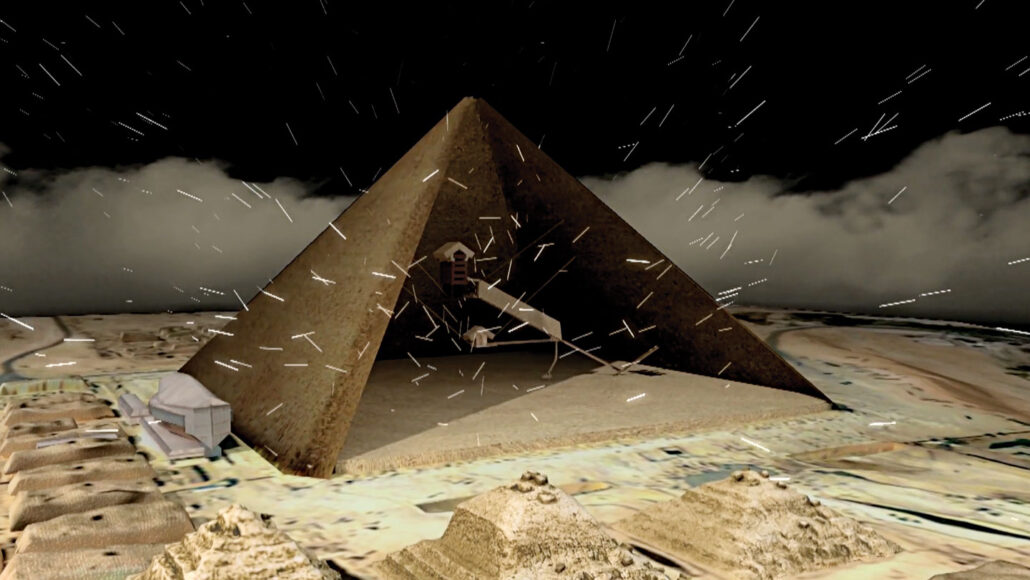Questions for ‘Muons reveal the inner worlds of pyramids, volcanoes and more’

An invisible rain of tiny particles called muons pierces structures on Earth’s surface, including the Great Pyramid of Giza. Those muons can help map out the chambers within the pyramid. Some have even revealed a mysterious hidden void.
HIP Institute
To accompany ‘Muons reveal the inner worlds of pyramids, volcanoes and more’
SCIENCE
Before Reading:
- Subatomic particles refer to any particle smaller than an atom. List the three major subatomic particles that make up atoms. If you aren’t sure, then do a quick internet search. (Hint: One such particle would be protons.) Briefly describe what makes each of these particles different from the others. Next, think about what these three particles might be made of themselves. How likely is it that these particles might be made from even smaller particles? And if they are, do you think all three are made from the same types of particles or different ones? In your opinion, how likely is it that other types of subatomic particles exist beyond the three that you listed?
- How familiar are you with the Arctic phenomenon called the aurora borealis? Also known as the “northern lights,” this natural light show occurs in the far north, especially during winter. Check out a few seconds of this short video to see the aurora’s waves of ghostly light. Briefly describe what you see in the video. High energy particles from our sun, called cosmic rays, play a role in this light display when these rays interact with Earth’s atmosphere. Take a guess: How might interactions between the sun’s cosmic rays with our atmosphere lead to the kind of light display you see in the video?
During Reading:
- What are muons? What can scientists learn about pyramids and volcanos using muography? How do muons get produced?
- On average, how many muons pass through your thumbnail each minute? What can be learned by measuring how many muons something absorbs?
- List two similarities between muons and electrons. List two differences. How do antimuons differ from regular muons?
- What are spark chambers used for? Why are they called “spark” chambers? Today, what has “largely replaced” spark chambers?
- What did Kunihiro Morishima help discover within the Great Pyramid? According to Morishima, what are some advantages of using nuclear emulsions over other techniques for detecting muons? In addition to emulsion detectors, what other detector did Morishima and his team use in the Great Pyramid?
- Other than Egypt, where else in the world exists pyramids that could be studied using muography?
- What is Vesuvius? Where is Vesuvius located? How has Vesuvius caused problems for people in the past? How are Mariaelena D’Errico and her team using muon technology to understand Vesuvius better?
- What is meant by the term “deep learning?” How accurately did the team’s deep learning system predict eruption days based on muon data?
After Reading:
- Imagine this. You have your own muon detector, and you know how to interpret its data. You can travel anywhere to use your detector. Where would you go? Explain how the muon detector would help you learn, locate or explore something. Use examples from the story to back up your explanation for why this new application or use might work.
- What were you most surprised or interested to learn in this story? Sometimes new scientific findings or techniques generate further questions. Come up with one follow-up question after reading this story. Point out which part of this story inspired your new question.